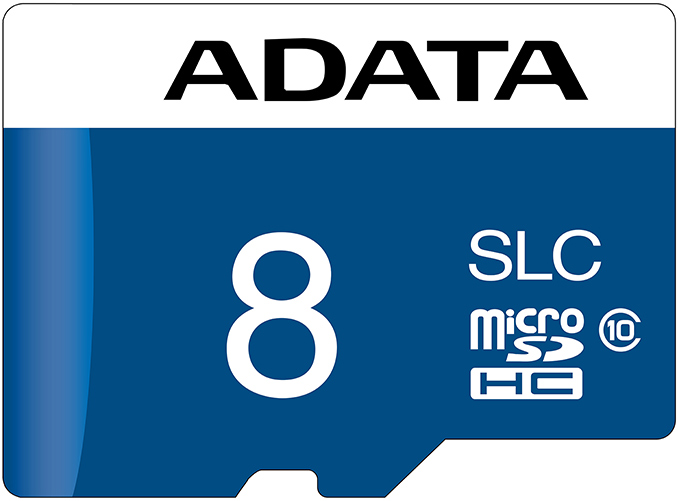ADATA Launches microSD Cards Based on SLC NAND Memory
by Anton Shilov on April 25, 2019 4:00 PM EST- Posted in
- Memory Cards
- ADATA
- SD cards
- SLC

ADATA has introduced a new lineup of microSD cards that use SLC NAND and are aimed at industrial applications. By incorporating the lower-density and higher-reliability memory type, ADATA's IUDD362 are designed to offer enhanced endurance and a longer lifespans than typical TLC/QLC microSD cards, making the cards a better fit for harsh operating conditions.
ADATA’s IUDD362 microSD cards come in capacities of 1 GB, 2 GB, 4 GB, and 8GB. The manufacturer does not disclose the supplier of SLC NAND memory it uses, though the company’s key partners are well known. The devices support read/write speeds of up to 30/25 MB/s, and their power consumption is just 0.6 W.
It goes without saying that these kinds of low performance and capacity figures are not very impressive, especially when more traditional microSD cards can offer many times these figures. But performance isn't the cornerstone of the IUDD362 microSD cards; reliabiltiy is. ADATA says that the controller of the cards fully supports ECC technology, SMART capability that can indicate imminent drive failures, wear leveling, flash protection, hardware power detector, secure erase and other things to ensure maximum stability and reliability. As a result, the cards are rated for a 3 million hours MTBF.
Given the focus on reliability, unsurprisingly ADATA has also hardened the cards to operate in harsh environments. All told, the cards are rated to operate in wide range of temperatures, from -40°C to 85°C, making them a very good fit for including industrial automation and transportation systems (in-vehicle data loggers, etc.).
ADATA plans to start sales of its IUDD362 microSD cards shortly. Parties interested in getting them are advised to contact the company.
Related Reading:
- Kingston Launches High-Endurance microSD Cards: Up to 128 GB
- SanDisk Launches SD and microSD for Industrial and Automotive: Extreme Temps, Upped Reliability
- ADATA Launches ISSS314 and IM2P3388 Industrial SSDs: 3D NAND, Extreme Temps
- Micron and Western Digital Unveil 1 TB microSD Cards with A2
- HiDisc’s 1 TB SDXC Card with A2 Rating Now at Retail
- Lexar at CES 2019: 1 TB SDXC UHD-I Memory Card Announced
Source: ADATA










28 Comments
View All Comments
0ldman79 - Friday, April 26, 2019 - link
Further it's likely hardened for temps and general abuse.danwat1234 - Friday, April 26, 2019 - link
Only up to 32GB? U can get a Samsung Pro 32GB microSD card for $20danwat1234 - Friday, April 26, 2019 - link
I mean only up to 8GB for the Adatajabber - Sunday, April 28, 2019 - link
8GB is a little on the teeny side but if they went up to 16/32GB they could be handy for wedding photographers and the like.Bolognesus - Monday, April 29, 2019 - link
What wedding photog uses a camera with a microSD slot, though? Prosumer and up level cameras are all vanilla SD afaik.And there's plenty of robust SD cards available aimed at photography which do have the much higher write speed you kind of want for burst photo rate etc anyway.
jordanclock - Tuesday, April 30, 2019 - link
Any photography-oriented SD card (micro or otherwise) is going to start at 64GB and will absolutely favor high write speeds over reliability. No one wants their shots to stop because the SD write buffer is full.This has a use for one scenario: Always-on equipment in harsh environments where storage needs are minimal, but reliability is paramount. These will be put into systems that either need to always be up or are expensive to service.
Samus - Sunday, April 28, 2019 - link
Good for a dashcam as long as you don’t care about having more than an hour of video history.Xajel - Tuesday, February 25, 2020 - link
If priced accordingly, these will be good for Raspberry data logging, of course along with log2ram.